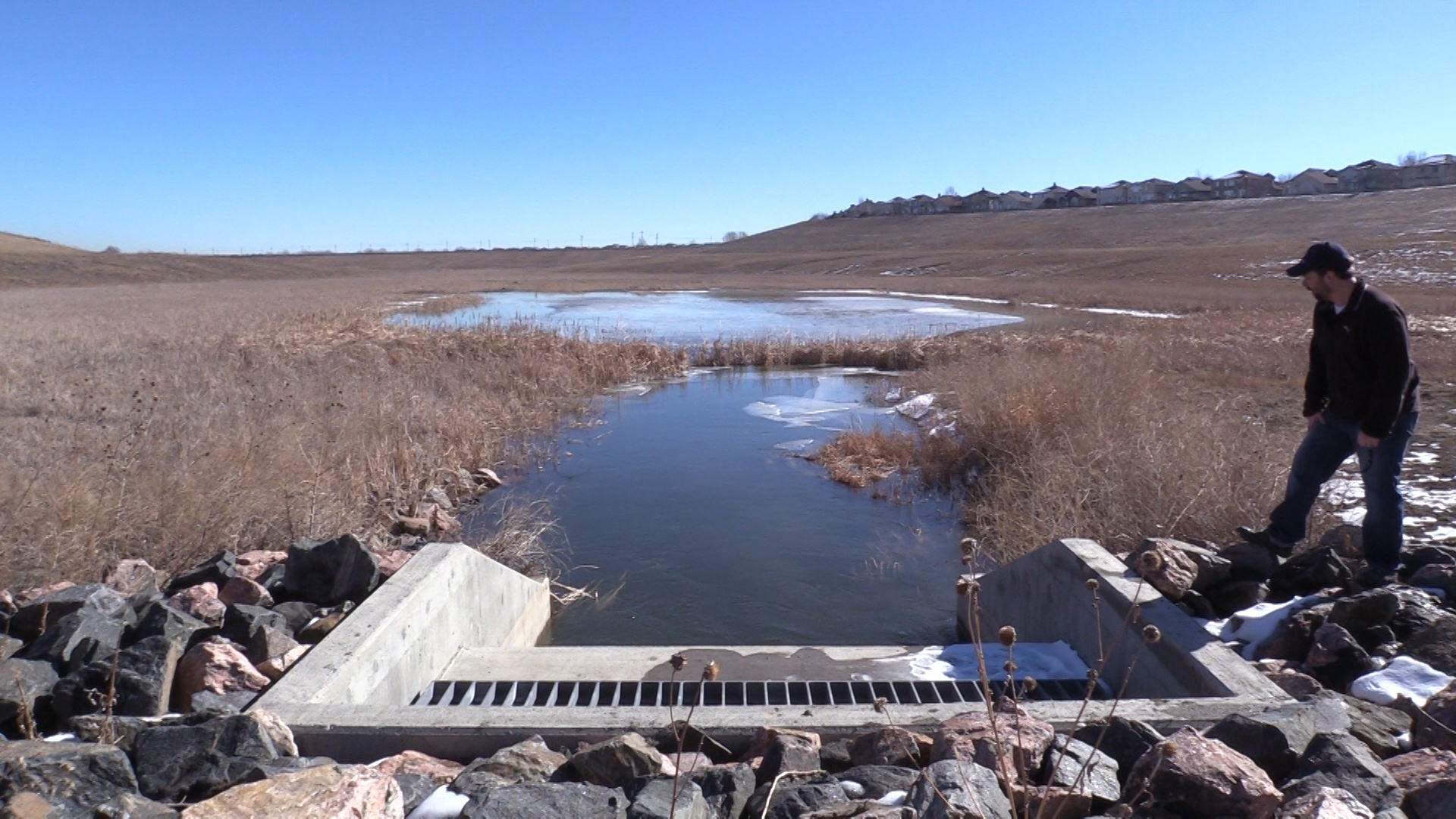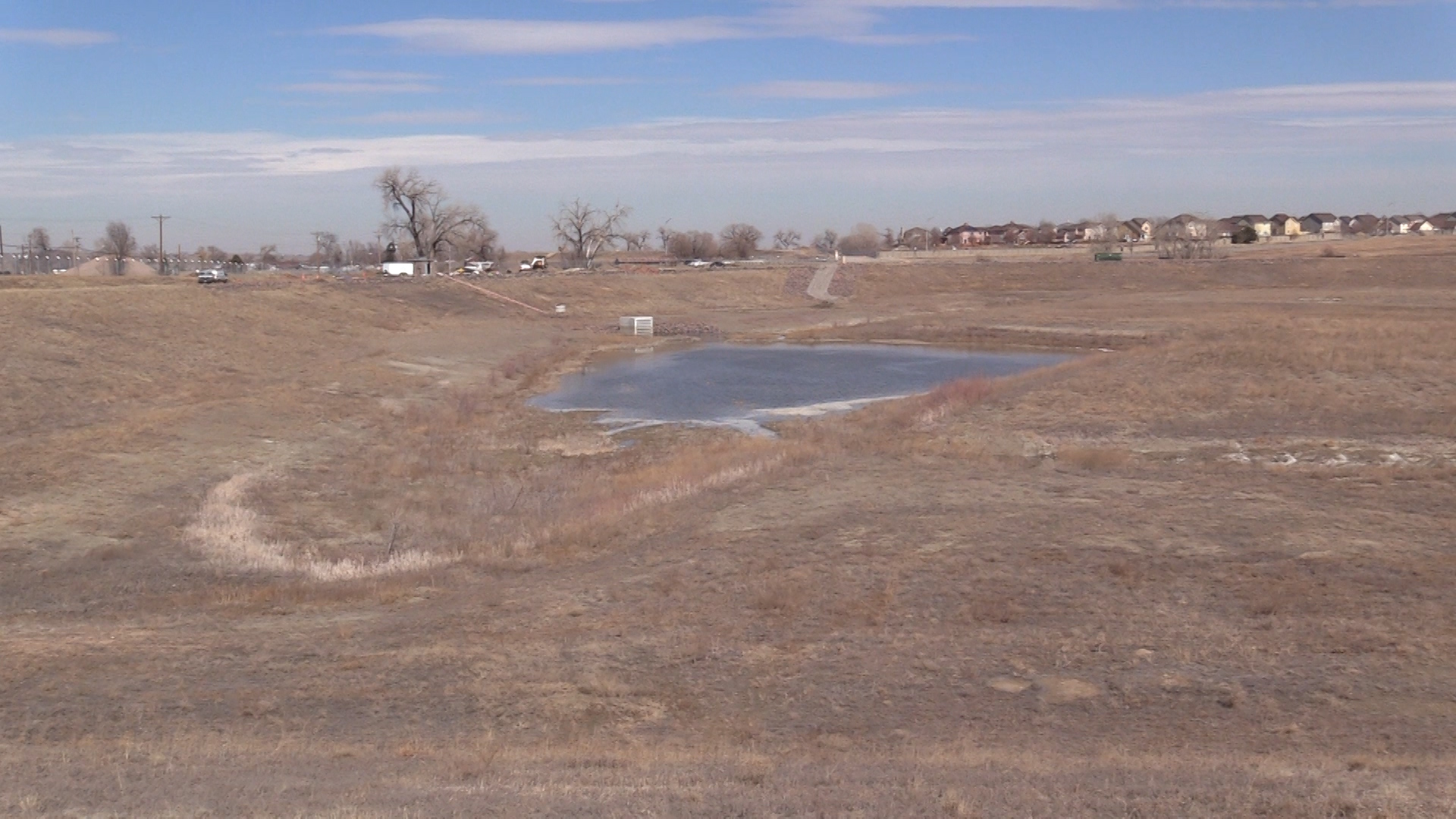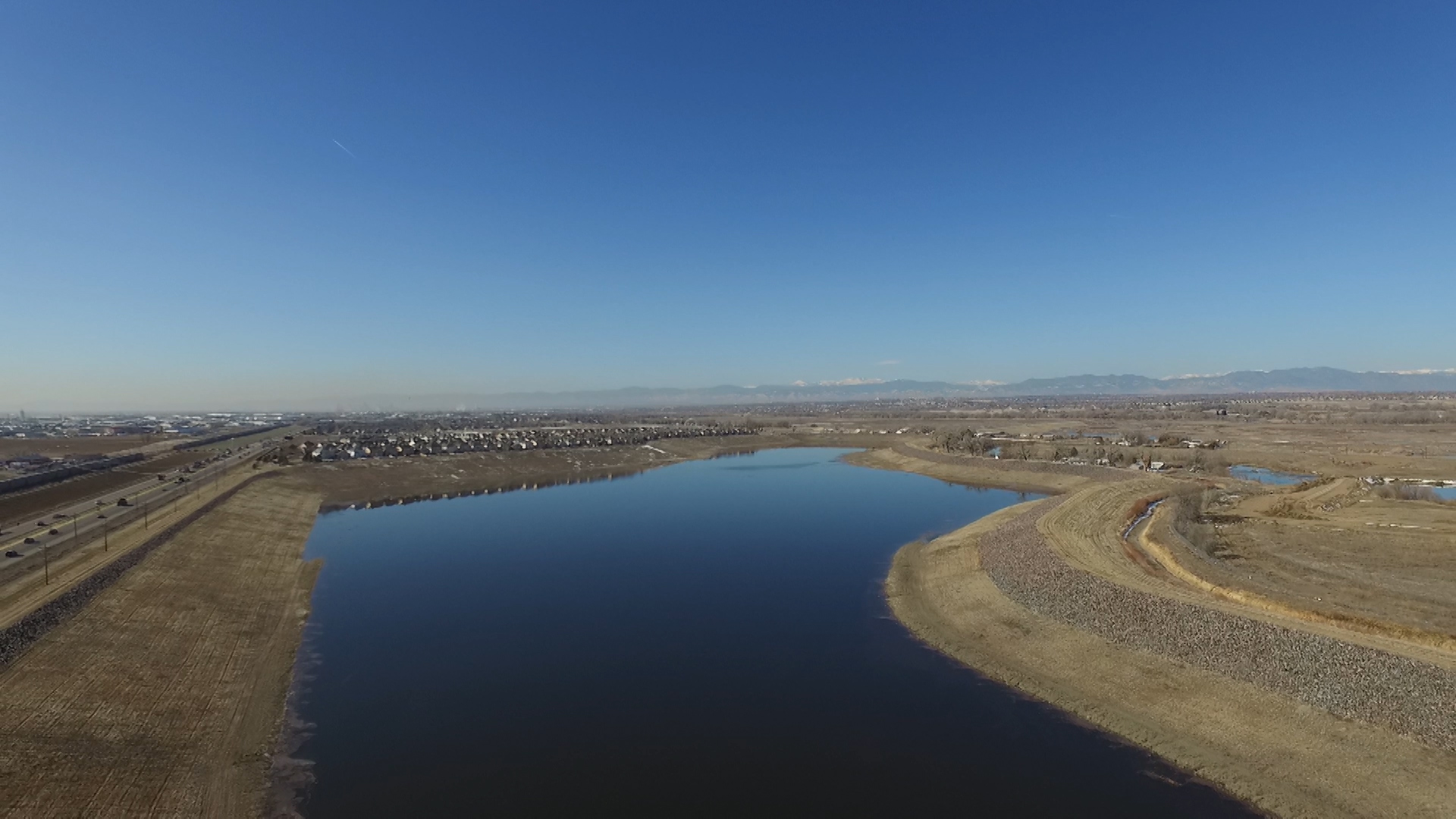
Small reservoirs offer big benefits down the road
The landscape is changing north of Denver where two old gravel pits in Adams County, Colorado, are slowly filling with water.
“These reservoirs have been 20 years in the making,” said Ryan Stitt, downstream reservoir program manager at Denver Water. “It’s taken a lot of planning and hard work, and we’re excited to see the water going in.”
Crews began filling Dunes and Tanabe Reservoirs, located near the South Platte River in Henderson, Colorado, on Feb. 13 and March 1. It’s all part of Denver Water’s Downstream Reservoir Water Storage Program, which reclaims sand and gravel mines and converts them into water storage facilities.
Tanabe was named after a longtime farmer in the area; Dunes gets its moniker from the nearby housing development.
“We bring water from the South Platte River through an irrigation ditch and a network of underground pipes to fill Dunes and Tanabe,” Stitt said. “It also takes a lot of careful planning to bring water into these reservoirs.”
Once the reservoirs reach full capacity, they will hold about 2.2 billion gallons of water total — enough to fill the Pepsi Center seven times.
“The goal of the downstream reservoirs is to be more efficient with our water supplies,” Stitt said. “Particularly the water we bring over from the West Slope.”
Denver Water gets half of its water supply from the Colorado River. Because that water is not native to the Front Range, Colorado laws allow the water to be reused multiple times after it’s gone through customers’ homes, been cleaned at a wastewater plant and released back to the river.
Denver Water began operating its first downstream reservoirs, located at the South Complex, in 2009. The South Complex includes Bambei-Walker and Welby Reservoirs. Dunes and Tanabe are part of the North Complex, which includes three other reservoirs along the South Platte River.
Two more gravel pits near Fort Lupton will be developed for water storage in the future. Once all nine reservoirs are completed, they will be able to store around 10.5 billion gallons of water.
“Before we had these reservoirs, we weren’t able to make use of all of the reusable water available to Denver Water and it went down the South Platte River,” Stitt said. “Now we have new places to store it so that we can increase our water reuse.”
Once the water is in the reservoirs, Denver Water primarily uses it for water exchanges. Water exchanges are like trades between water users along the South Platte River.
“Exchanges are an efficient way for us to store water where we can access it, and ensures agricultural and municipal users downstream get the same amount of water they would have received ” Stitt said.
The North Complex reservoirs developed out of a partnership between Denver Water and the South Adams County Water and Sanitation District that began in 1996.
Denver Water does not currently use water in the reservoirs for its drinking water supply, but could develop a system to pump water to a treatment facility if needs change in the future. (Denver Water started evaluating this concept as an alternative when it began the permitting process for the Gross Reservoir Expansion Project.)
South Adams County will use a portion of the reservoirs' total capacity to store and deliver its water supplies for exchanges, as well as to supplement its drinking water supply.
"The downstream reservoirs are vital to the current and future viability of our water resource plans and operations," said Jim Jones, general manager for South Adams County Water and Sanitation District.
The reservoirs will not be used for recreation, and residents around Dunes and Tanabe can expect to see the water level rise in the winter and fall in the summer when Denver Water exchanges the water.
“These reservoirs are an important part of our long-term planning,” Stitt said. “We’re putting them to good use now and they’ll help us adapt to future demands to ensure a reliable water supply.”



